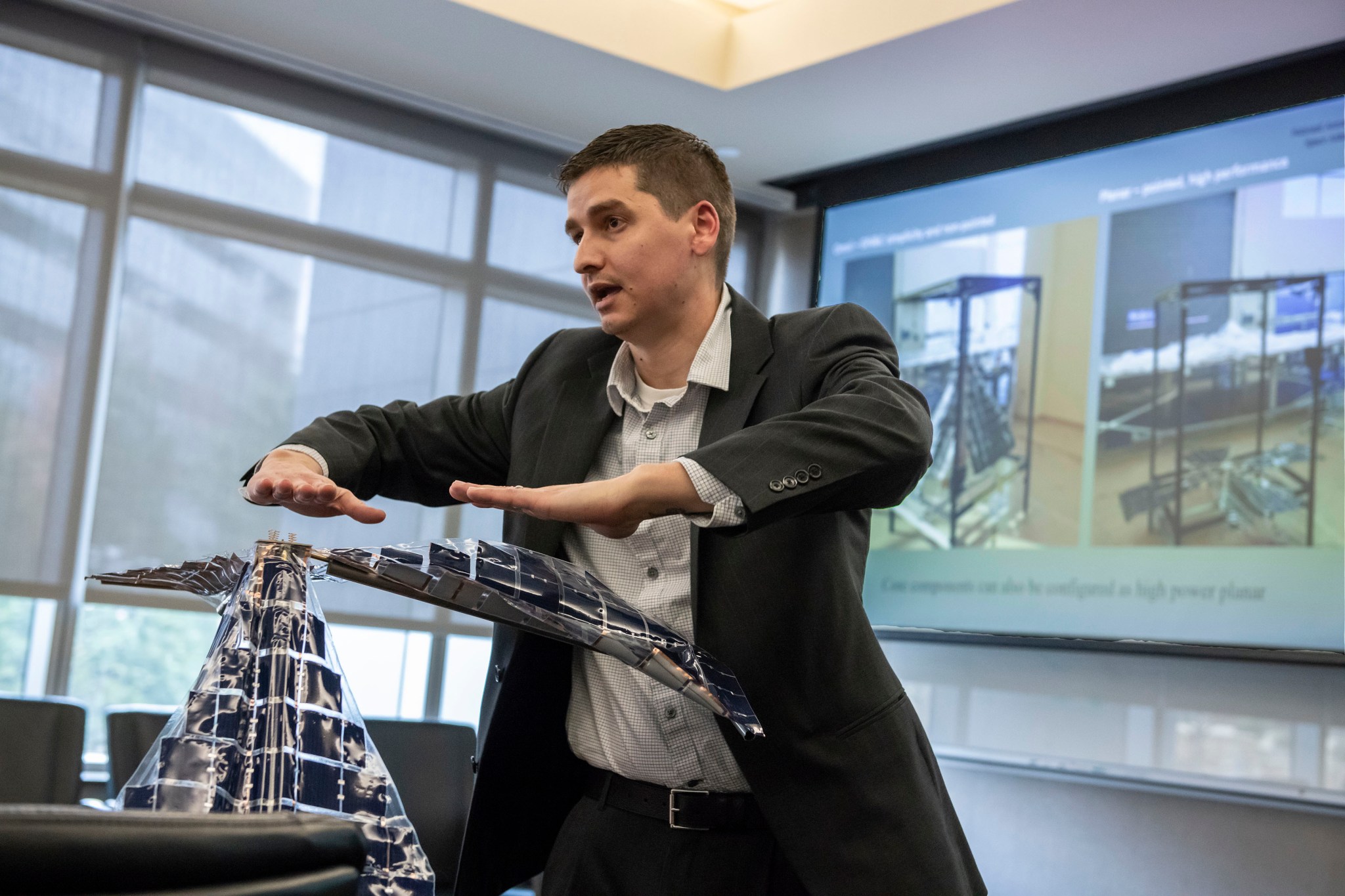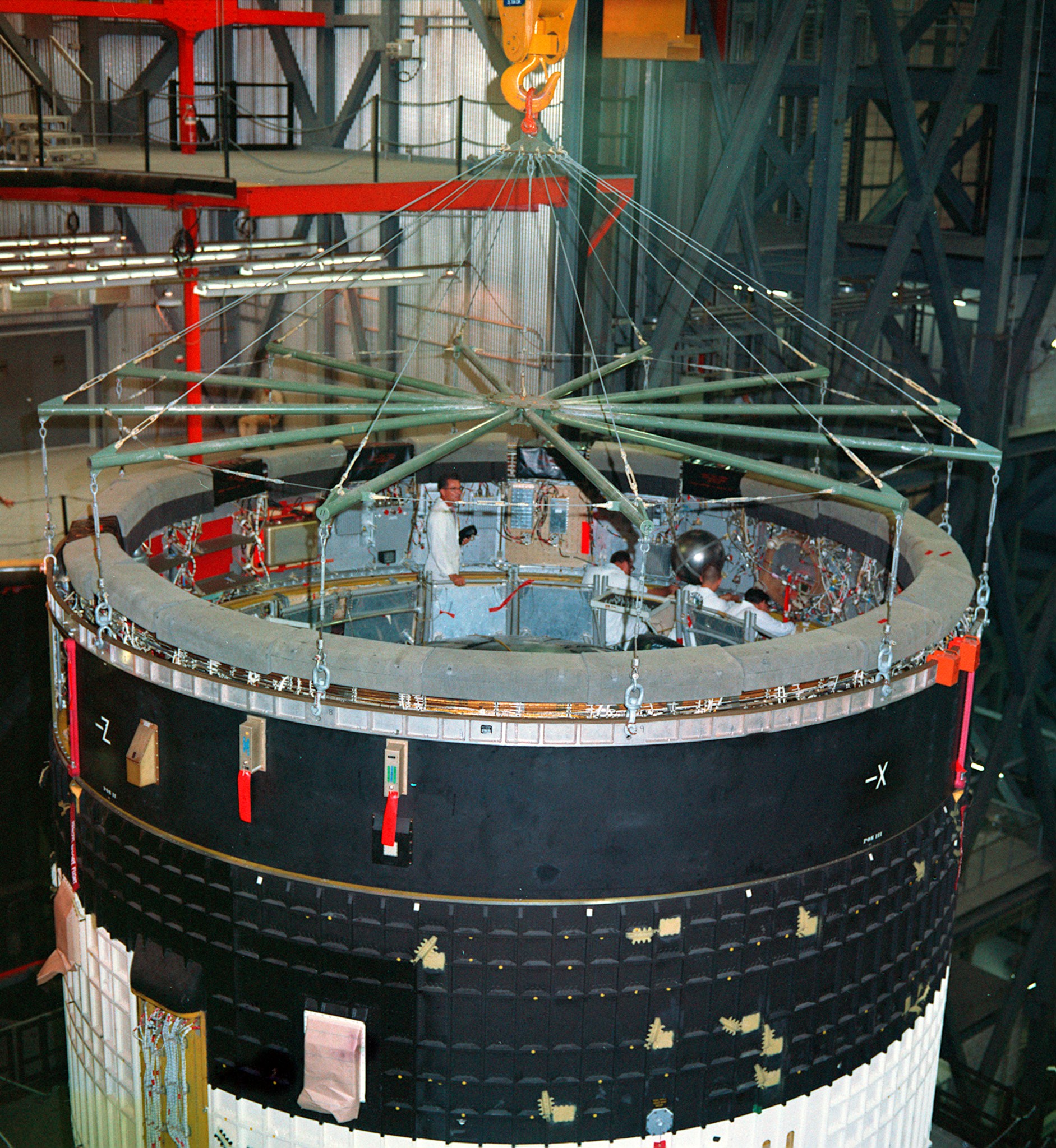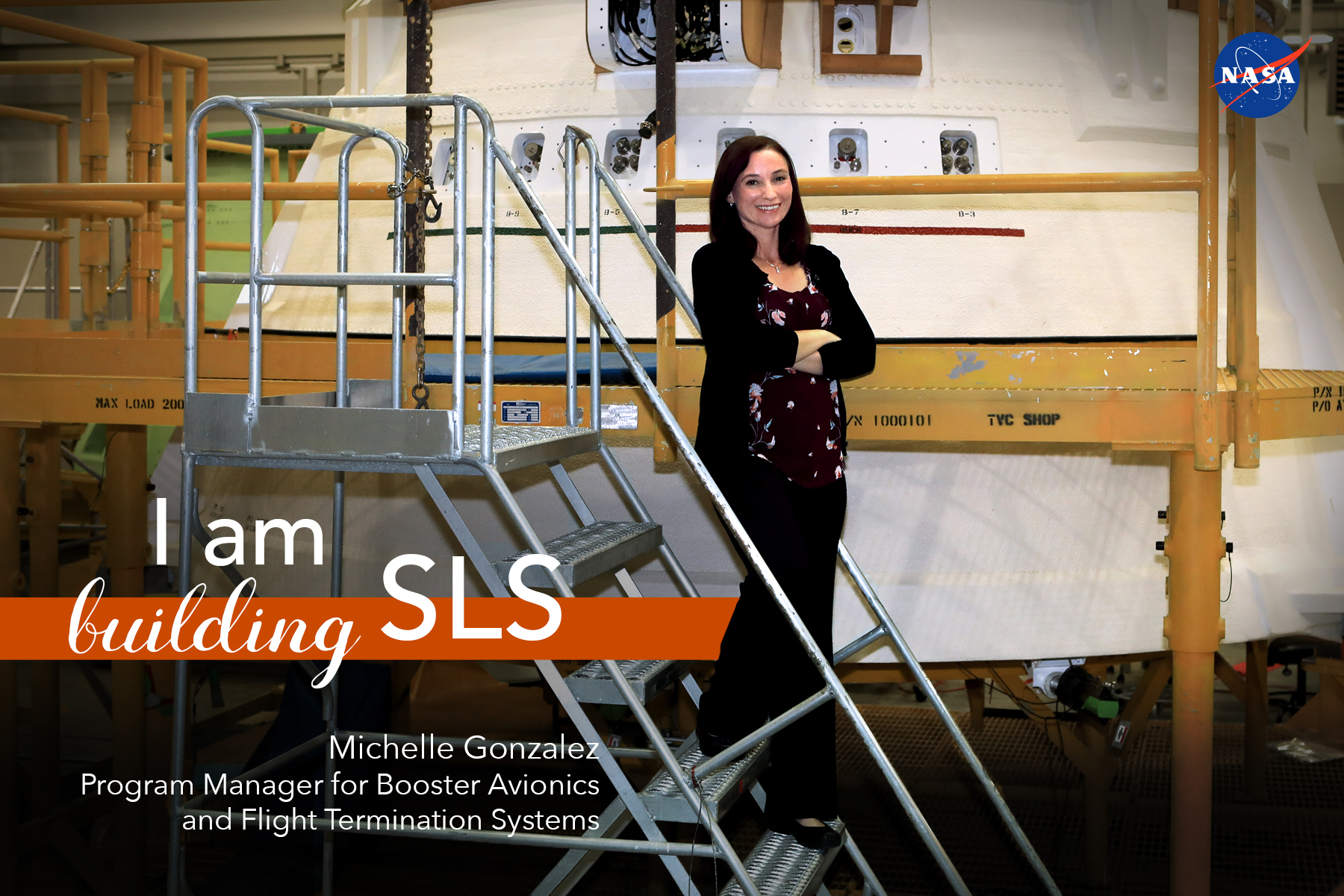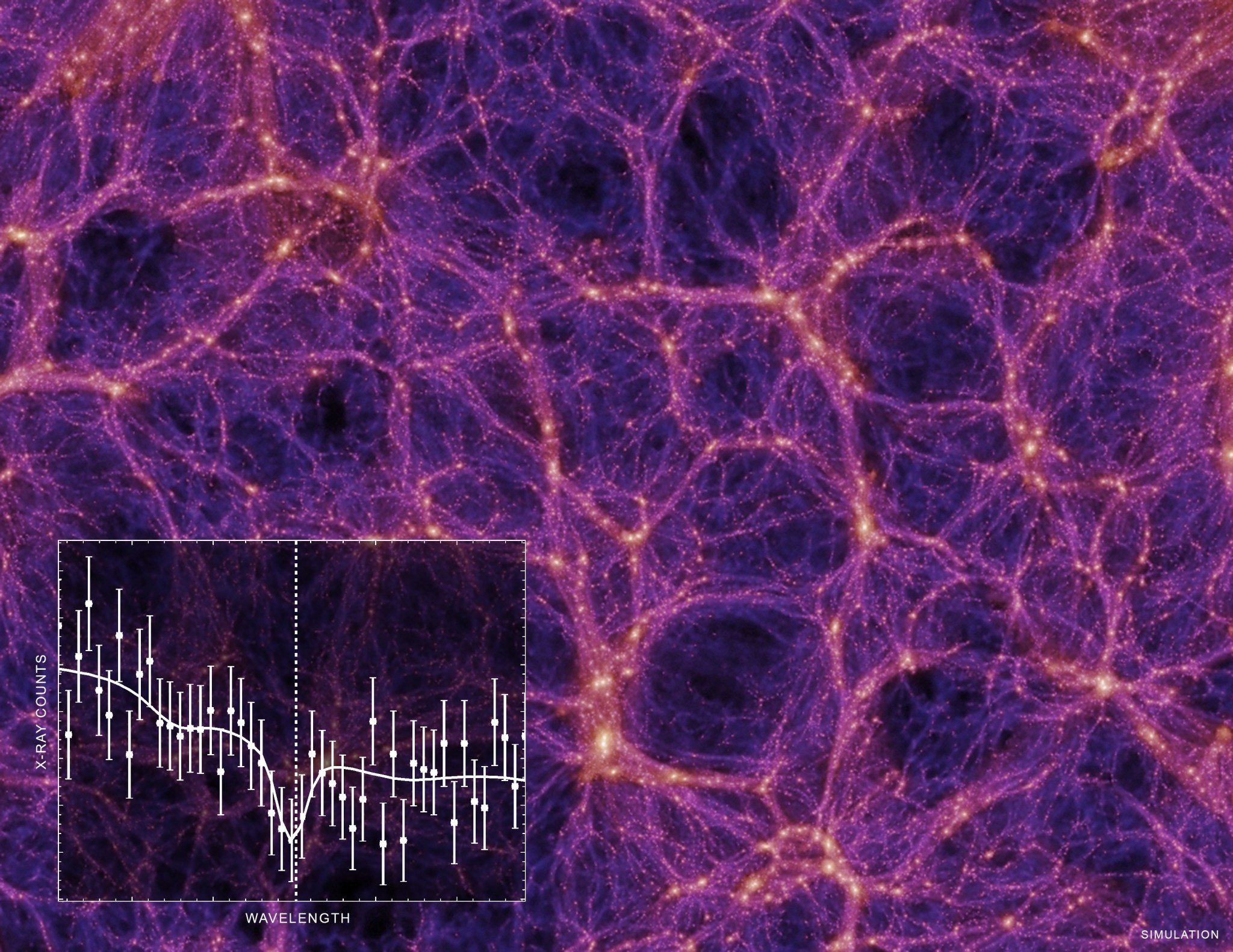In This Week’s Star
- NASA Resumes RS-25 Engine Test Series
- I Am Building SLS: Michelle Gonzalez
- Rocket Science in 60 Seconds: Getting to the Core of It All
- Where is the Universe Hiding its Missing Mass?
- Marshall Tech Talk to Feature Solar Array Technology
- This Week in NASA History: Stacking of Apollo 4 – Feb. 23, 1967
NASA Resumes RS-25 Engine Test Series
NASA resumed RS-25 rocket engine testing for the agency’s new Space Launch System (SLS) rocket with a Feb. 13 hot fire on the A-1 Test Stand at NASA’s Stennis Space Center. The hot fire marked the first RS-25 test of 2019 at Stennis, continuing a series with developmental engine No. 0525 that began in August 2018. NASA is testing RS-25 engines to help power the SLS rocket, which will send humans deeper into space than ever before. Each RS-25 test marks progress toward Exploration Mission-1, during which SLS will launch an Orion spacecraft around the Moon and back to Earth to test critical capabilities needed for deep space flights. (NASA)
I Am Building SLS: Michelle Gonzalez
Meet Michelle Gonzalez, a Northrop Grumman program manager at NASA’s Marshall Space Flight Center for the booster avionics and flight safety system for NASA’s new rocket, the Space Launch System.
Space has been a part of my life as long as I can remember. I grew up close to NASA’s Kennedy Space Center, and I remember running outside to see the space shuttle launches and thinking that one day I wanted to be a part of the action.
After graduating from Florida Institute of Technology in Melbourne, I began working for United Space Alliance on the Space Shuttle Program. Now, I work as the Northrop Grumman program manager for the booster avionics and flight safety system for NASA’s new rocket, the Space Launch System.
My team is working to get the booster avionics hardware for SLS from manufacturers all over the country transported to the Booster Fabrication Facility. At the Booster Fabrication Facility here at Kennedy, the avionics are being integrated into the two boosters that will be used for the first integrated flight of NASA’s Orion spacecraft and the SLS rocket — Exploration Mission-1 (EM-1). The booster avionics, receiving commands from the SLS flight computers in the core stage, provide 80 percent of the control authority for the rocket during the first two minutes of flight. The boosters for the first two launches of SLS will be the world’s largest and most powerful NASA boosters at 177 feet long and 12 feet in diameter with each producing more than 3.6 million pounds of thrust.
Before launch, the rocket must be certified to show it meets all design requirements before it proceeds to the integrated test, checkout and flight readiness review. Certification happens in a variety of ways. To certify the booster avionics hardware, my team takes test articles – replicas of the flight hardware– and exposes them to extreme conditions to ensure they can withstand the conditions of launch. We expose them to vibration, extreme temperature shifts and electromagnetic interference at levels far beyond what they would experience at launch. If they check out when we are done putting them through the paces, we know they will perform well in flight and keep the astronauts safe.
Our team gets to solve challenging problems through this process. For example, NASA is using batteries from the Space Shuttle Program in the SLS rocket. When we were conducting vibration testing, we learned we needed to beef up the battery so it could handle the heavier loads required for SLS.
When I’m not working on America’s next great rocket, I spend time with my family. I can’t wait to take my two children to the launches of SLS and give them the memories that I had of hearing the roar of the engines and watching history being made when the space shuttle left Earth.
Rocket Science in 60 Seconds: Getting to the Core of It All
Rocket Science in 60 Seconds gives you an inside look at work being done at NASA to explore deep space. Chad Bryant is the core stage manager for NASA’s Space Launch System core stage at NASA’s Marshall Space Flight Center. In this episode, he explains what the massive, 212-foot-tall core stage is and how its five main structures will be outfitted and joined together before it is loaded onto NASA’s barge Pegasus and transported to NASA’s Stennis Space Center for final testing. For more information about SLS, visit https://www.nasa.gov/exploration/systems/sls/index.html (NASA)
Where is the Universe Hiding its Missing Mass?
Astronomers have spent decades looking for something that sounds like it would be hard to miss: about a third of the “normal” matter in the universe. New results from NASA’s Chandra X-ray Observatory may have helped them locate this elusive expanse of missing matter. From independent, well-established observations, scientists have confidently calculated how much normal matter — meaning hydrogen, helium and other elements — existed just after the Big Bang. In the time between the first few minutes and the first billion years or so, much of the normal matter made its way into cosmic dust, gas and objects such as stars and planets that telescopes can see in the present-day universe. (Credits: Illustration: Springel et al. (2005); Spectrum: NASA/CXC/CfA/Kovács et al.)
Marshall Tech Talk to Feature Solar Array Technology

John Carr, an electrical power subsystem engineer for the Space Systems Department of NASA Marshall Space Flight Center’s Engineering Directorate, provides an overview of the thin-film solar array for CubeSats, or small satellites, and how Marshall is using this technology to develop very large thin-film solar arrays for deep space exploration missions. Carr’s Feb. 14 presentation was part of the Marshall Tech Talk series, a monthly speaker series featuring innovative projects of interest to the Marshall community from speakers who work within and outside NASA. (NASA/Fred Deaton)
This Week in NASA History: Stacking of Apollo 4 – Feb. 23, 1967

This week in 1967, stacking of the AS-501 stages for the Apollo 4 mission began at NASA’s Kennedy Space Center and was completed with the placement of the Instrument Unit on Feb. 25. The Apollo 4 mission was the first all-up test of the Saturn V rocket, designed to test all aspects of the Saturn V launch vehicle. Mission objectives included testing of structural integrity, compatibility of launch vehicle and spacecraft, heat shield and thermal seal integrity, overall reentry operations, launch loads and dynamic characteristics, stage separation, launch vehicle subsystems, the emergency detection system, and mission support facilities and operations. The mission was deemed a successful test. The Saturn V was designed at NASA’s Marshall Space Flight Center. Now through December 2022, NASA will mark the 50th anniversary of the Apollo Program that landed a dozen astronauts on the Moon between July 1969 and December 1972, and the first U.S. crewed mission — Apollo 8 — that circumnavigated the Moon in December 1968. The NASA History Program is responsible for generating, disseminating, and preserving NASA’s remarkable history and providing a comprehensive understanding of the institutional, cultural, social, political, economic, technological and scientific aspects of NASA’s activities in aeronautics and space. For more pictures like this one and to connect to NASA’s history, visit the Marshall History Program’s webpage. (NASA)






























